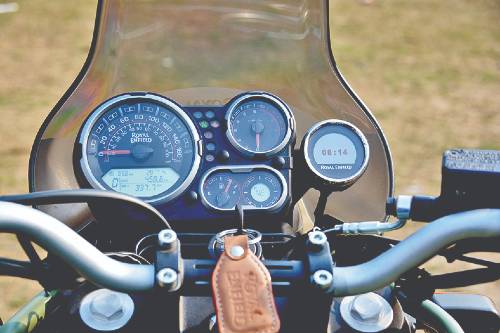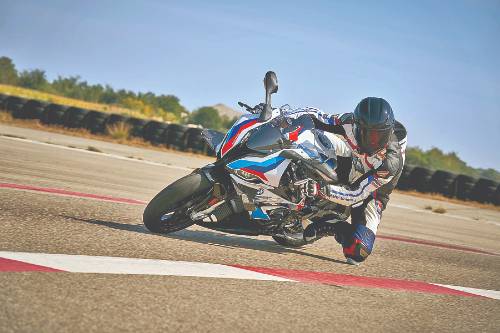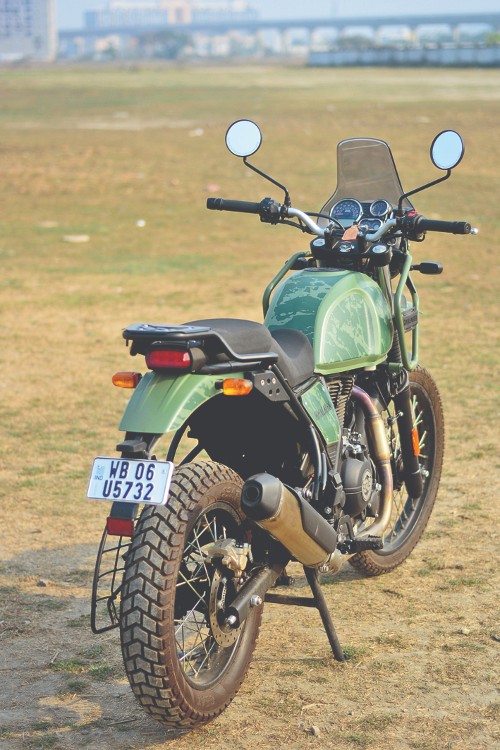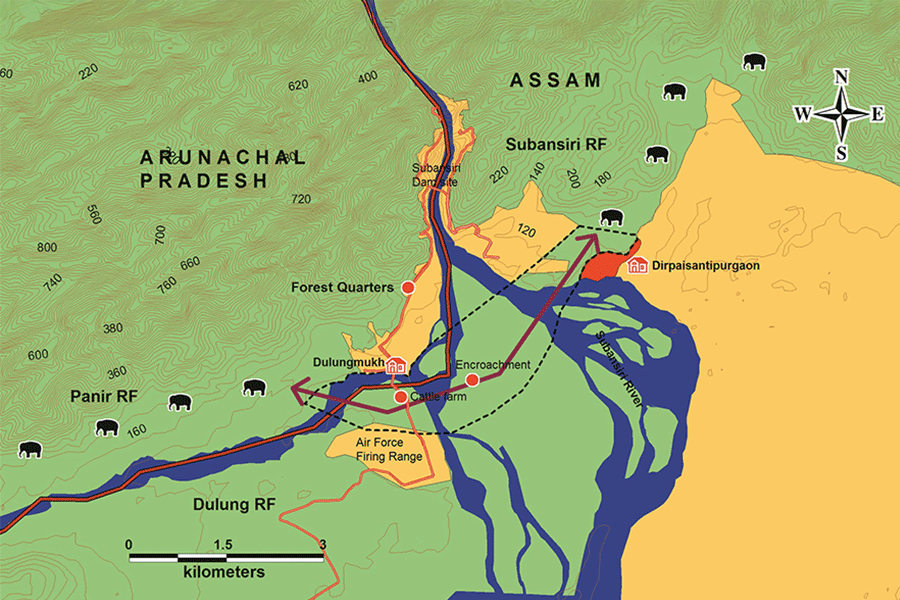If you are reading this, chances are you are a motorcycle rider (or will be one soon enough) and you aspire to go touring on a motorcycle. Quite frankly, you’re not alone. In the absence of any genuinely organised form of leisure motorcycling, the most popular sport for motorcycle riders is to tour our vast and beautifully diverse nation. The other truth about leisure motorcycling in India is that no manufacturer other than Royal Enfield has done it for longer or as well, which means if there was one Indian motorcycle company that was well placed to create a motorcycle purpose-built for touring, it was Royal Enfield.
THE TOURING THEME
The company finally lived up to its potential in early 2016 when it launched the Himalayan on the sidelines of the Auto Expo. With a lot of fanfare too. I should know, because I was there. The bike, and all the paraphernalia around the launch, promised to be the ideal choice of wheels for those looking to tour country roads. High ground clearance, long travel suspension, upswept exhaust pipe, on/off road tyres, sturdy frames for luggage racks or panniers, a windscreen and even a compass, it was all there. In short, unless you were being asked to jump off a helicopter like Phillip was by the mad scientist in Blyton’s book, the bike was prepped to accompany you on any adventure, mountain or not.
That said, I have always believed that there was scope for improvement, which is exactly what Royal Enfield has done with the updated 2021 version of the Himalayan.

THE NEW ITERATION
I’m sure you’ve noticed the badass camouflage paint job on this bike but that’s not the only thing that’s new. The windscreen is now a fraction shorter, which is great because the older one had a tendency to augment wind buffets on the helmet. The outlandish metal crash protection around the front of the bike has been recrafted so that your knees don’t hit them when you’re in the plush but not saggy quick drying saddle. The most visible difference from the earlier versions, however, has to be the addition of the “built by Google” Tripper, which we first saw on the Meteor 350. According to me, this is a significant addition to the Himalayan’s arsenal since that old compass, which is still there, was pretty useless. With the RE app on your phone you can now pair your phone to the Tripper and get turn by turn navigation via Google maps. A great thing too, because you’ll not have to waste time stopping and asking for directions from random people. However, it appears that RE had the basics right the first time around. So the split cradle frame remains and so does the 411cc, single cylinder air-cooled engine with an oil-cooler that had already been updated to meet BS VI emission norms.
THE POWER PLAY

To ride, it doesn’t feel very different from the old BS IV version of the bike, which is great because the Himalayan was already pretty good in its own right. At 24.3bhp, the Himalayan’s peak output isn’t massive. Its competitor in terms of engine capacities, the KTM 390 Adventure boasts a far higher 43 horses while the other KTM, which is priced closer to the RE, the 250 Adventure offers around 30 horses. The Himalayan’s offer of 32Nm of max torque, however, helps it stay in the game against the 390’s offer of 37Nm and the 250’s offer of 24. What is significant for me is the way in which this output is delivered to the rider. Admittedly, I will refrain from comparing the Himalayan to either of the KTMs on this count since I haven’t ridden either. What I will say, however, is that the power delivery is smooth and, like all members of the RE family, the grunt from the Himalayan’s motor is easily accessible. You don’t really have to work hard. It’s always there when you need it. At slow speeds, there’s plenty and more to make short work of overtakes as you spot gaps in the city traffic, and while out on the highway an easy cruising speed of 80-100 kmph is reached with minimal effort.
Work your right wrist and you’ll see the speedo needle on the quirky as ever instrumentation, breach the 120kmph mark, but beyond that you’ll need to put in a lot of effort.
THE HANDLING

In terms of handling, the relatively low saddle height (compared to other adventure tourers) coupled with a well-thought-out handlebar-to-saddle-to-foot-rest relation, makes the Himalayan a sweet bike to ride around town. Also, you can completely ignore what old well-established parar dada Bulleteer might have to say about the 21-inch front wheel and 17-inch rear wheel combination. It doesn’t matter so much. The chassis is well sorted and handles twists and turns quite well and the ride quality is pretty good too. The bike is capable of ironing out virtually everything Indian roads throw at it and only develops a slightly nervous demeanour when you push the speed past its comfort zone. In and around Calcutta, one doesn’t really get much of a chance to test a motorcycle’s off-road abilities but unless you’re a serious dirt rider looking to do jumps or ride really hard around a trail you won’t find this bike lacking. For the kind of dirt path or graded road riding that most riders will experience, this Royal Enfield is more than up to the job at hand.
So is there a chink in the Himalayan’s armour? There is in fact. The disc brakes with the dual channel ABS, though improved over the first version, continue to be devoid of feedback and aren’t gentle on the fingers when you wish to stop in haste. That said, the bike will certainly stop and will track a fairly straight line too under urgent braking while that dual channel ABS further helps in cutting down unnecessary dramatics.
THE CALL
So, to the sixty-four-million-dollar question then: Is it worth the Rs 2.48 lakh (on-road in Calcutta) that Royal Enfield wants for this motorcycle? Under normal circumstances the answer to this should have been an easy yes. In its own right the Royal Enfield Himalayan is really that good, especially when you think of the Himalayan as a starting point in your journey into the world of adventure touring motorcycles.
However, it’s the KTM 250 Adventure that complicates things. Sure, it costs a bit more at Rs 2.91 lakh (on-road in Calcutta) and has an engine that is smaller than the Himalayan’s by a full 161cc. Yet, the 250 offers more power, is lighter, has the highly aspirational KTM styling and technology that is definitely more modern than anything the RE can boast. So, should you buy that instead? Well, I can’t really say because, first, I haven’t ridden the KTM and second, so much of motorcycle buying is a matter of personal choice and deep emotion. What I can say, however, is that those of you who opt for the Himalayan will never feel shortchanged. Not when you’re cruising down the highway with your eyes set on the mountains of adventure that lie on every motorcycle ride.
Pictures: Abhijit Mitra
WHAT MAKES THE CUT

• Power delivery
•Handling
• Plush ride quality
• Rugged Build quality
• Map-friendly app
• Dual channel ABS
• Quick drying seat
...& WHAT DOESN’T
• Wooden brake feel Engine heat in city traffic Weight
THE HIMALAYAN IN NUMBERS
• Motorcycle type: Touring bike
• LxB (mm): 2,190mm x 840
• Ground clearance (mm): 220
• Saddle height (mm): 800
• Kerb weight (kg): 199
• Engine: 411cc, air- and oil-cooled, single cylinder
• Maximum power (bhp @ rpm): 24.3 @ 6,500
• Maximum torque (Nm @ rpm): 32 @ 4,000-4,500
• Transmission: 5-speed, constant mesh
• Fuel tank capacity (litres): 15
• Brakes: Front: 300mm disc with twin-piston floating caliper, ABS; Rear: 240mm disc with single-piston floating caliper, ABS
• Price: Rs 2.48 lakh (on-road in Calcutta)











